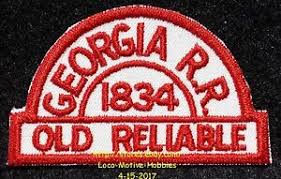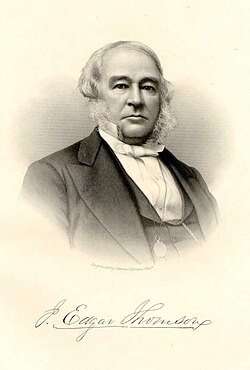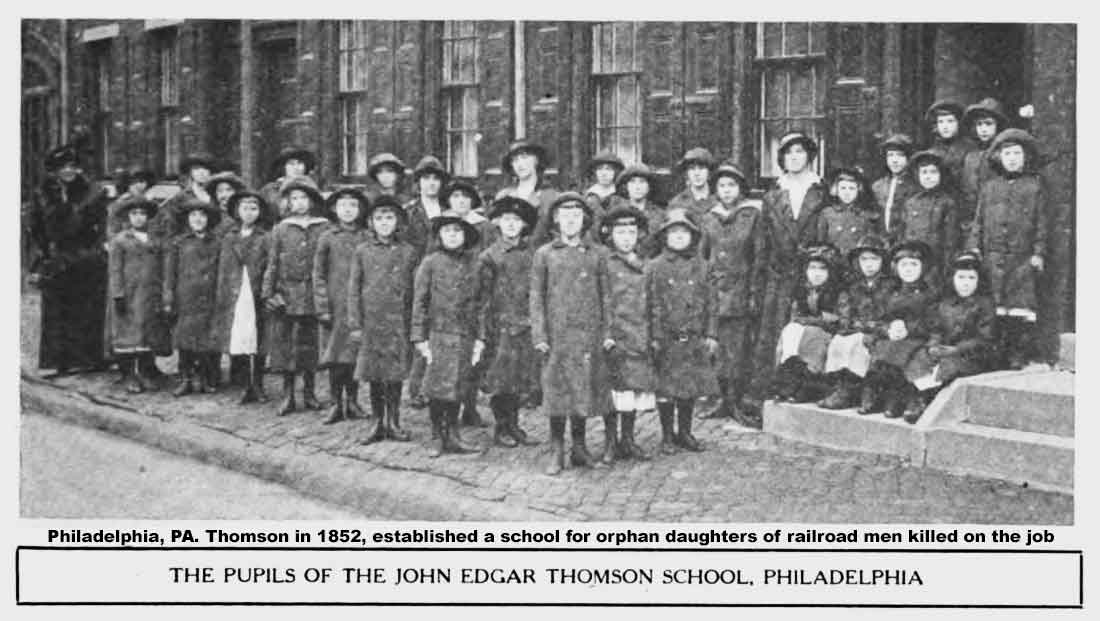 John Edgar Thomson
John Edgar Thomson 
Entrepreneur, Civil Engineer, Financier and Philanthropist

Born February 10, 1808, John Edgar Thomson was an entrepreneur best known for his leadership of the Pennsylvania Railroad (PRR) from 1852 until his death in 1874. Thomson made it the largest business enterprise in the world and a world-class model for technological and managerial innovation. Previously the railroad's first chief engineer, he became its third president.
Thomson began his railroad career at age 19 as a rodman working in a survey crew locating the Philadelphia and Columbia Railroad; later he worked for Camden and Amboy Railroad. In 1832 he sailed to Great Britain, making an inspection tour of the new railways constructed in the country. Through his father's influence, he became a member of Pennsylvania state's engineer corps, surveying routes for a rail line west from Philadelphia. He was soon promoted to assistant engineer, and in 1830, when the line of the Camden & Amboy Railroad was located across the state of New Jersey, Thomson was placed in charge of an engineering division.
At the age of 26 in 1834, Thomson was hired as the chief engineer of the newly chartered Georgia Railroad. He located the road, negotiated and oversaw construction contracts, operated portions as they opened, and promoted possible connections to the north and west. Thomson became nationally known for his expertise; his salary was $4000 in 1837.

The state of Pennsylvania invested extensively in state-owned canals and short-line railroads, but they were neither profitable nor efficient, and the state was falling behind its rivals in infrastructure development, which it believed was critical for economic growth. Pennsylvania Railroad, also known by the acronym PRR, incorporated in 1847, built a line across the Allegheny Mountains from the state capital in Harrisburg, Pennsylvania west to Pittsburgh, to eliminate the inefficient Allegheny Portage Railroad and the slow-paced canals. The line would give Philadelphia a link to the fast-growing west, allowing it to compete with Baltimore, which was served by the Baltimore and Ohio Railroad, and New York City.

The company appointed Thomson as chief engineer at a salary of $5000 a year. He sought out the best routes, making allowances for grades and river crossings. With Herman Haupt, he co-designed what became famous as "Horseshoe Curve" and built a railroad with practicable grades. He switched the fuel from wood to coal for the locomotives; other lines followed suit, thus opening up a new demand for coal, which the PRR shipped to all railroads. The through line between Philadelphia and Pittsburgh opened for traffic in February 1854, and made Philadelphia a major outlet for long-haul traffic from the west. This connection also strengthened its port, which had access to the Atlantic Ocean.
In 1871-1872, the Pennsylvania expanded into the Midwest by astute purchases. It bought the Cleveland and Pittsburgh Railroad in 1871 as well as smaller lines in Ohio, merging them into the system. The most important acquisition during this period was the purchase of the Pittsburgh, Cincinnati, Chicago and St. Louis, with lines extending westward from Pittsburgh to St. Louis, and branches reaching southward to Cincinnati, and northward to Chicago. This system included over 1400 miles of road, giving the Pennsylvania Railroad a second line to Chicago, a direct line to St. Louis, a second line to Cincinnati, and access to territory not previously tapped.
Besides expanding the system and putting it on a solid financial basis, Thomson made the Pennsylvania the technological leader of the industry. It took the lead in changing its engines to run on coal rather than wood burning, and from iron to steel (in constructing rails, bridges and cars). With Philadelphia emerging as the center of the locomotive industry, new innovations were offered first to the Pennsylvania Railroad, which embraced them.
Legacy
As a conservative, risk-averse financier, Thomson avoided disaster during the panics of 1837, 1857, and 1873, while rival lines often went bankrupt. His Pennsylvania Railroad was worth about $400 million in the early 1870s (before the Panic of 1873 depressed values), with $25 million in traffic revenue and a profit of $8.6 million. It paid steady dividends year in and year out and was a favorite for cautious investors. The speculators who were so numerous in the post-Civil War era looked elsewhere. Thomson had a vision of a transcontinental line, invested his own money in several ventures, and briefly in 1871 the Pennsylvania controlled the Union Pacific.

Thomson married Lavinia Frances Smith in 1854. They had no children together, but adopted a daughter. By the time of his death in 1874, after the national financial Panic of 1873, Thomson's fortune had declined by three-fourths, to $1.3 million. He bequeathed most of it to charity, including a fund to help orphans whose fathers may have been killed in the course of their railroad duties.